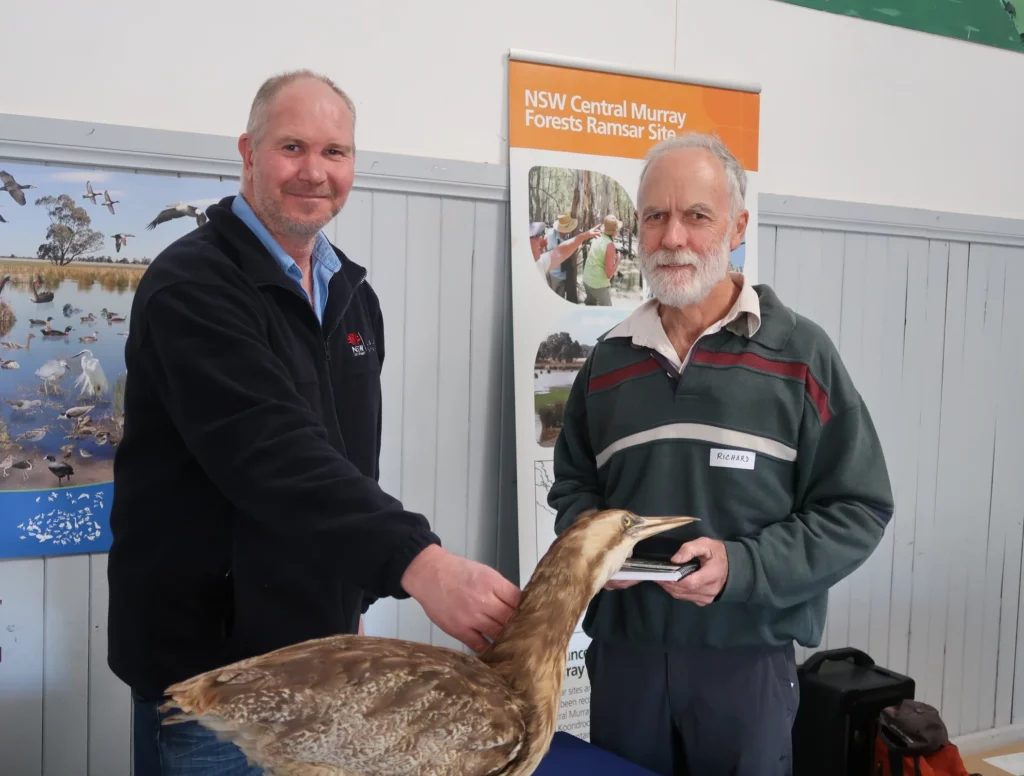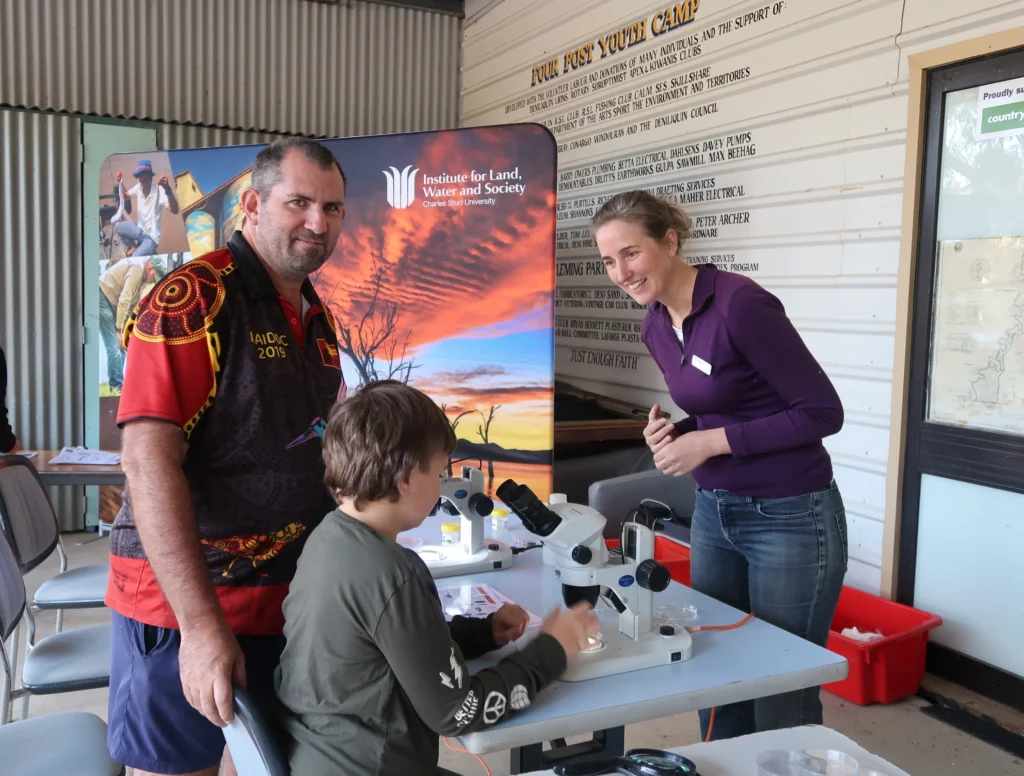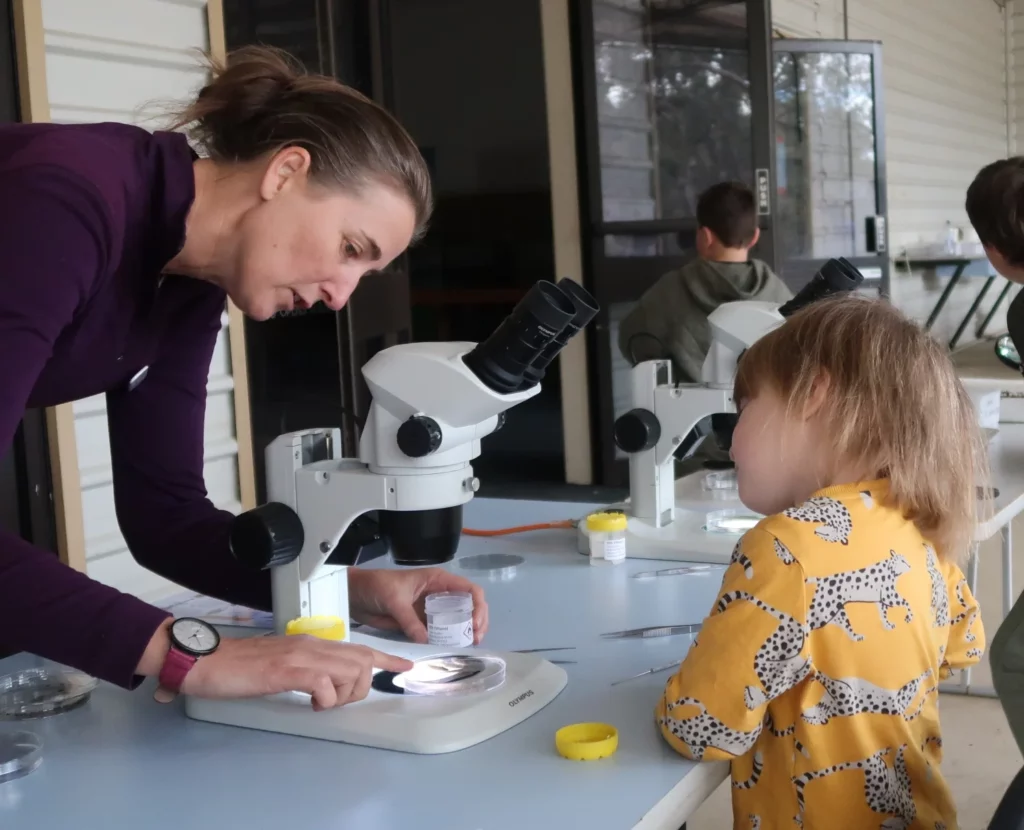The steady waters of the Edward/Kolety River as they flow below the steep riverbank at Four Posts Camp near Deniliquin are mesmerizing and are a reminder of the timelessness of this Country and its waterways.
As such, the camp in its river red gum forest setting was the ideal location for the Edward/Kolety Community Field Day held on Saturday the 28th of May. More than 75 people came together to share knowledge, learn about the river monitoring and research being undertaken by different organisations, and to take part in the ‘hands on’ activities.
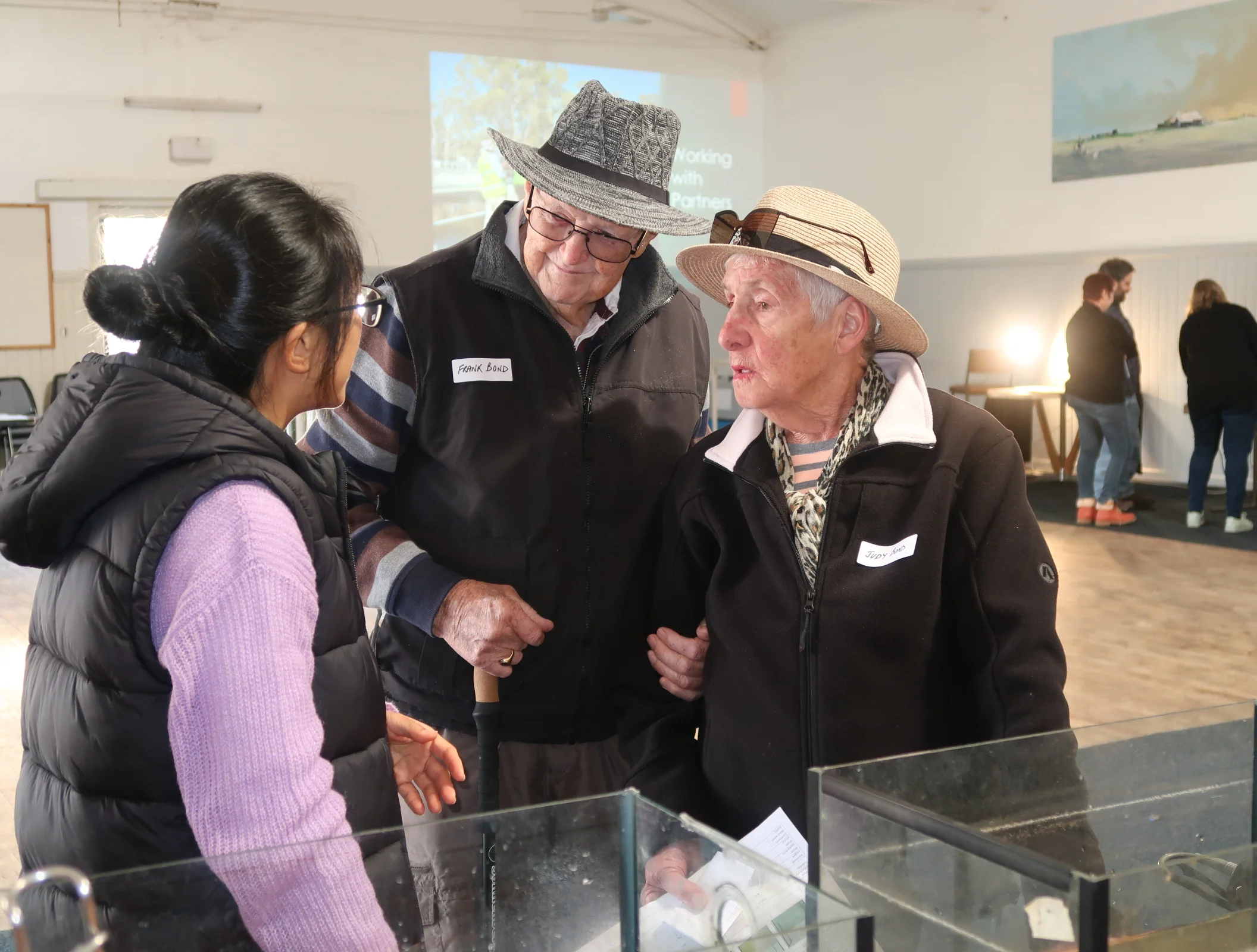
“There was a good turn up with a range of people from different organisations as well as locals from Deniliquin and the surrounding area,” said Professor Robyn Watts from Charles Sturt University (CSU), who leads the Edward/Kolety-Wakool Flow-MER environmental water monitoring program. “The day was a great success in terms of collaboration, people sharing knowledge and learning, and everyone just having fun and enjoying the day.”
Getting Started
The activities began with a Welcome to Country by Jeanette Crew, OAM, a Wamba Wamba Pereppa Pereppa Nation woman, and a Smoking Ceremony.
“The message I want to get across is the importance of people working collaboratively or in partnership, not in isolation of each other,” said Jeanette, chairperson from the Yarkuwa Indigenous Knowledge Centre.
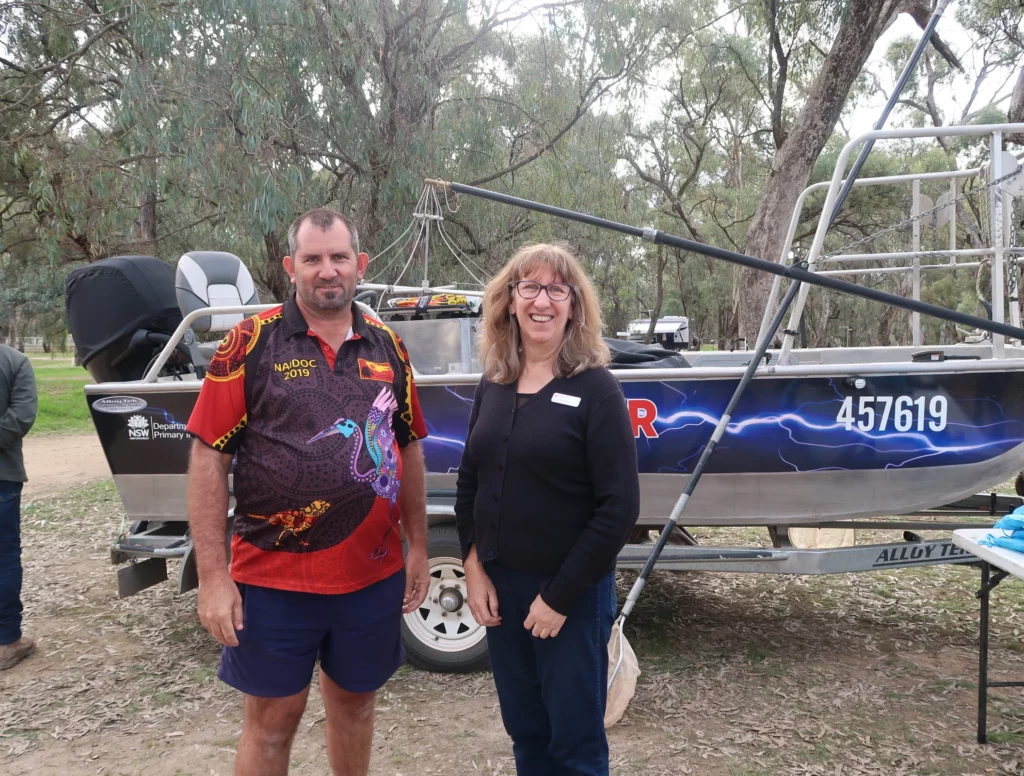
Jeanette said this combined knowledge will be beneficial in terms of the future management of “not just the Werai Forest but all our Country.”
She also said how proud she was of the Kolety Werkul River Rangers Team and the good work they were doing. She hopes they will be the first of numerous teams doing the same kind of work “because we really need them.”
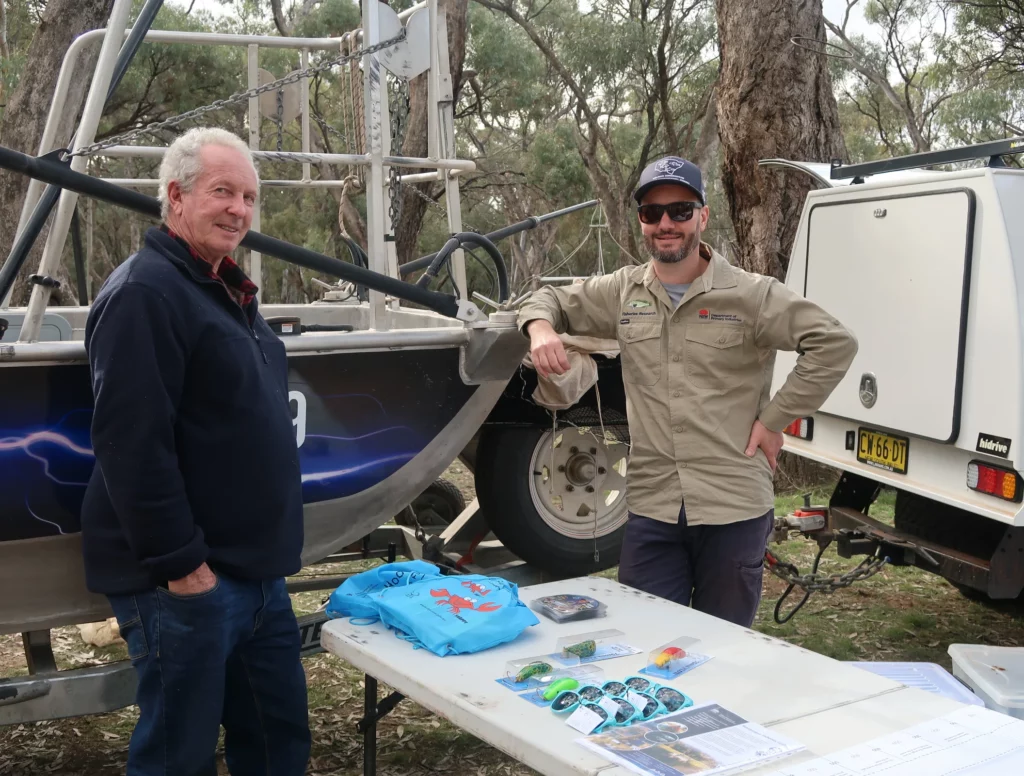
Hands-on Activities
Activities on the day included an opportunity to look at fish larvae and water bugs under a microscope led by fish ecologist Dr Nicole McCasker. Environmental chemist Dr Shasha Liu facilitated a hands-on water quality activity. Dr James Van Dyke and the Kolety Werkul Rangers had a display about turtle monitoring and conservation, with an animation of turtle movement in the Edward/Kolety River that was created using the results of their Flow-MER turtle research project. Dr Jason Thiem and Tim McGarry set up a display of fishing equipment used to monitor fish in the river system and Thom Gower from Streamology showed how drones are used to assess riverbanks and vegetation. The Wetlands Section within the Commonwealth Environmental Water Office (CEWO), had a display on Ramsar wetlands. There were also other displays by CSU’s Spatial Data Analysis Network (SPAN) and Murray Local Land Services.
“Days like this field day are extremely important in terms of sharing knowledge and experience; seeing the outcomes of all the work that has been done and is being done in this geographical area; and in emphasising the joint arrangement between Western science and our science, where our science gets the recognition it deserves.”
A Successful Field Day
The day provided an opportunity not only for interested members of the public to come along and learn more about the river monitoring and research happening in the area, but also for people from the various partner organisations to meet each other and find out more about what they each do.
As Josh Campbell, Land Services Officer with Murray LLS said: “It’s been a really good opportunity to catch up with project partners.”
Peter Newall, a consultant working for the Wetlands Section of CEWO, Bernard Morris, and Erin Kirsch, of the Wetlands Section, used the day to talk about Ramsar wetlands and gather information about the ecological character of the Werai Forests. The Werai Forests are a part of the Central Murray Forests Ramsar site and the info collected from the day will be used to update the Ramsar Information Sheet on the NSW Central Murray Forests Ramsar website. Ramsar Wetlands are recognised as internationally important under the Ramsar Convention, highlighting the importance of the field day in uniting people and knowledge.
“The day was very much about bringing everyone together to continue to share knowledge on Country, “said Kate Reid, water delivery officer for the Edward Kolety-Wakool System in CEWO’s Central Basin Delivery Section.
“Traditional Owners have been working closely with scientists and the community over the past few years to exchange knowledge, collaborate and form friendships. It was great to be able to see everyone come together and connect on Country. We value being able to continuously learn from Traditional Owners to understand how we can support community to care for Country.”
“Everyone contributed to make the day successful including the Deniliquin Rotary Club who provided the wonderful lunch, Roseanne Farrant who did a marvellous job of coordinating the local logistics, and all the people from the different organisations,” said Professor Robyn Watts.
The day was hailed as a “huge success” by organisers and attendees. The field day was co-hosted by numerous groups including; CSU, Yarkuwa Indigenous Knowledge Centre, Murray-Darling Wetlands Working Group, Werai Land and Water Aboriginal Corporation, Streamology, Edward-Wakool Angling Association, Murray Local Land Services (LLS), NSW DPI Fisheries, NSW Planning and Environment, La Trobe University, and the Department of Agriculture Water and the Environment (Australian Government). The event was funded by the Edward/Kolety-Wakool Flow-MER environmental water project.
Featured Photo: The Edward/Kolety River. Photo credit: Margrit Beemster.
